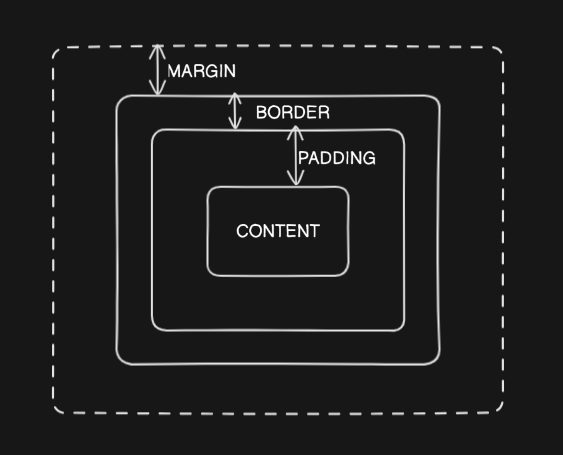Understanding the CSS Box Model: Margin, Border, and Padding
 Kajal jaiswal
Kajal jaiswalThe CSS Box Model is a fundamental concept in web development that defines how elements on a web page are structured and interact with their surroundings. Every HTML element is considered a rectangular box, and the box model is used to determine the element’s size, padding, borders, and margins.
What is the CSS Box Model?
The CSS box model is a fundamental concept in web design that describes the structure of an HTML element. It defines how elements are displayed and how their size is calculated. The box model consists of the following components:
Content: The actual content inside the box, such as text, images, or other elements.
Padding: The space between the content and the border.
Border: The line surrounding the padding (or content if padding is not specified).
Margin: The outermost layer, which creates space between the element and its neighbors.

1. Content:
The content area is where your text or media resides. Its size is defined by:
width
height
Example:
.box {
width: 300px;
height: 200px;
}
2. Margin
The margin defines the space outside an element’s border. It creates separation between elements, ensuring they don’t overlap visually.
Key Points:
Margins are transparent and don’t have a background color.
Margins can collapse (e.g., when two vertical margins meet, the larger of the two is applied instead of their sum).
Example:
.box {
margin: 20px; /* Adds 20px space outside the border on all sides */
}
You can also set margins for individual sides:
.box {
margin-top: 10px;
margin-right: 15px;
margin-bottom: 20px;
margin-left: 25px;
}
Or shorthand:
.box {
margin: 10px 15px 20px 25px; /* Top, right, bottom, left */
}
3. Border
The border surrounds the padding and content, creating a visible boundary for the element.
Key Points:
Borders can have different styles (e.g., solid, dashed, dotted).
You can customize the color, width, and style of each border side.
Example:
.box {
border: 2px solid black; /* 2px wide solid black border */
}
You can define borders individually:
.box {
border-top: 2px dashed red;
border-right: 3px solid blue;
border-bottom: 4px dotted green;
border-left: 5px double orange;
}
4. Padding
Padding is the space between the content and the border. It’s often used to create internal spacing within an element.
Key Points:
Padding inherits the element’s background color.
It increases the size of the element, but unlike margins, it doesn’t create space outside the element.
Example:
.box {
padding: 15px; /* Adds 15px space inside the border on all sides */
}
You can also set padding for individual sides:
.box {
padding-top: 10px;
padding-right: 15px;
padding-bottom: 20px;
padding-left: 25px;
}
Or shorthand:
.box {
padding: 10px 15px 20px 25px; /* Top, right, bottom, left */
}
box-sizing Property:
content-box (default): The
widthandheightonly apply to the content area. Padding and borders are added outside of the content area, expanding the element’s total size.border-box: The
widthandheightinclude the content, padding, and border. This means that any padding or border will not affect the overall width and height of the element, making layout easier to manage.
Example:
div {
width: 200px;
padding: 20px;
border: 5px solid #000;
margin: 10px;
box-sizing: border-box; /* Total width includes padding and border */
}
In this case:
With
box-sizing: border-box, the total width of the element will be 200px (including padding and borders), while the content area will have 150px width.Without
box-sizing: border-box, the total width would be 200px + 40px (20px padding on each side) + 10px (border on each side), making it 250px total width.
Real-Life Example of the CSS box Model:
A Blog Card Layout
Imagine you’re building a blog page where each post is displayed as a card. A card typically has:
A title (content)
Some spacing around the title (padding)
A border to highlight the card (border)
Space between multiple cards (margin)
Key Takeaways :
The CSS Box Model is essential for understanding element spacing and layout.
Use box-sizing: border-box; for consistent sizing across elements.
Margins create space outside elements, while padding creates space inside the element’s border.
“Thank you for taking the time to read this article.”
Subscribe to my newsletter
Read articles from Kajal jaiswal directly inside your inbox. Subscribe to the newsletter, and don't miss out.
Written by
